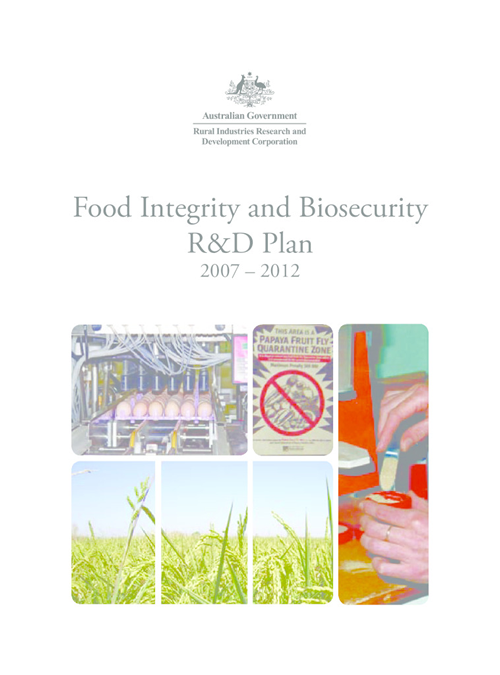The Food Integrity and Biosecurity Program is managed by RIRDC as part of the National Rural Issues Portfolio. The R&D plan was prepared in consultation with the FIB Research and Development Advisory Committee. The Committee has members from the Department of Agriculture, Fisheries and Forestry (DAFF), the Department of the Prime Minister and Cabinet (PM&C), National Farmers’ Federation (NFF), Australian Food and Grocery Council, Plant Health Australia (PHA) and Animal Health Australia (AHA). The plan was developed between February and May 2006.
This 2007–12 R&D plan sets out five objectives and accompanying strategies for R&D under the program. Each strategy has a set of performance indicators. The strategies define how each objective should be tackled, and the indicators provide the basis on which the program will be assessed.
The plan is consistent with the RIRDC Corporate Plan (2007–2012) and Australian Government National Research Priorities and Rural Research Priorities. The plan reflects stakeholders’ priorities for R&D to support profitable, competitive and resilient agricultural industries and innovation and change in rural industries.
The current level of funding for the program is low relative to the R&D needs for addressing biosecurity and food integrity issues in RIRDC small industries. There are major gaps in R&D to identify risk and develop solutions for peri-urban production that is a concern to many industries. There may be scope for economies of scale in developing technologies and systems for managing risk in smaller industries. Substantial negotiation with the RIRDC industries and with other industry R&D organisations and state agencies will be required to source additional funding to pursue the strategies set out in this plan. Success in achieving this co-investment will indicate that the issues raised in the plan are priorities, and that successful implementation of the R&D outputs is likely.





